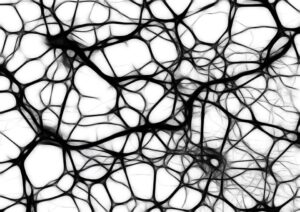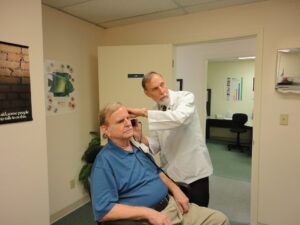 The so-called “smart cities” are increasingly becoming the subject of media discussion: nowadays the phenomenon of “smart cities” is the focus of attention of technology companies and entrepreneurs, local governments, and civil society. The primary task in creating and equipping “smart cities” is to improve the quality of life for citizens: such cities promise to be more modern and hi-tech.
The so-called “smart cities” are increasingly becoming the subject of media discussion: nowadays the phenomenon of “smart cities” is the focus of attention of technology companies and entrepreneurs, local governments, and civil society. The primary task in creating and equipping “smart cities” is to improve the quality of life for citizens: such cities promise to be more modern and hi-tech.
Structural integration of fiber Bragg grating sensors and fiber optic sensor systems represents a new branch of engineering and is a major breakthrough in creating smart city infrastructures. Nowadays fiber Bragg grating sensors are a fundamental and indispensable component of any intelligent control fiber optic system. A well-functioning control system is generally equipped with an FBG array of sensors that allows this system to collect and process the required data about its environment. After data collection, the fiber optic system is able to fully characterize its environment and adjust its operations accordingly. The comprehensive capabilities of the fiber Bragg grating products present many opportunities that were unavailable in the past due to high costs and limited accessibility. It is necessary to emphasize that fiber optic systems and associated equipment provide the essential processing power for small-scale devices through which the coordination of the FBG sensors will be easy to implement at a relatively low cost.
Fiber Deployments and the Internet of Things
In itself, the fiber Bragg grating sensor is a converter that converts parameters of a physical nature to an electronic signal, which can be fed into an autonomous system or can be interpreted by humans. These FBG sensors can transmit information about light, pressure, temperature, humidity, moisture, and a variety of other parameters. More sophisticated fiber Bragg grating sensors include accelerometers for measuring acceleration and vibration. An even later generation of FBG sensors is based on semiconductor physics, nanotechnology, and intelligent sensing devices which include smartphones amongst others. Nanotechnology is a key enabling technology for fiber Bragg grating sensor development because advances in nanotechnology will undoubtedly drive development in MEMS (MicroElectroMechanical Systems) and photonics, inevitably leading to the development of highly sophisticated but low-cost sensors. Nowadays smartphones are fitted with a variety of sensors such as GPS, gyroscopes, accelerometers, and compasses, enabling a variety of crowdsourcing applications, which will eventually be augmented by the Internet of Things. In the context of the Internet of Things, the communication between sensors nodes has to be wireless because the costs of cabling millions of sensors are impractical and extremely expensive.
Fiber Bragg grating sensor systems can be compared to and are capable of being the nervous system of infrastructure as they are extremely sensitive to outside and environmental interference. A large variety of FBG sensors allows for extensive measurements of multiple parameters of many different buildings and facilities.
Advantages of Bragg sensors
One of the main advantages of FBG sensors is that they provide reliable data that allow for well-informed decision-making based on reliable evidence. Fiber optic systems allow for the assessment of thousands of sensors in real-time on a single cable. FBG sensor systems are well-suited for the detection and recording of critical structural response characteristics as well as environmental indicators that lead to degradation.
An alternative for Challenging Strain and Temperature Measurements
Optic sensing becomes one of the noticeable aspects, across multiple business sectors such as civil&energy, medical, automotive, aerospace, and manufacturing industries. The worldwide distributed optic temperature sensing market is majorly driven by the growing optics technology-based installation. Based on applications, the market has been segmented into temperature sensing, acoustic/vibration sensing, strain sensing, and others. The distributed temperature sensing segment is anticipated to dominate the distributed fiber optic products application arena (in the term by size) by 2025. There are already examples of the implementation of FBG sensors into smart city infrastructures.
Fiber Bragg gratings are often used in strain sensing especially in such places where the environment is harsh (for instance, high-EMI, high-temperature, or highly-corrosive). Strain measurement is imperative during prototype design and testing. Strain measurements ensure that materials perform as they should and that the equipment is safe and durable. Measuring strain is crucial for testing complex structures, like aircraft, turbines, etc. There various ways in which stress can be measured, but it is widely accepted that FBG sensors are the most efficient way of strain measurement.
The ability to disconnect your monitoring instrumentation and return for results after a large amount of time such as months or even years is a great advantage of fiber Bragg grating sensors. For instance, in the case of bridges, it is common for engineers to visit the bridge and conduct impact testing using an impact hammer on the different parts of the bridge. This is time-consuming and even hazardous because of the height of some bridge structures. The distribution of a number of FBG sensors throughout the bridge and the attachment of the instrumentation to this bridge on a periodic basis is a much more efficient solution. This is only one of the good examples to demonstrate the effectiveness of the fiber Bragg grating strain sensors. Besides bridges, other examples of using FBG for long-term static strain testing are buildings, piers, and structures in high earthquake-prone areas.
The different structures may have very-low-frequency modes, and they may also have higher modes due to the effects of wind and tide. Most earthquakes and other earth tremors are low-frequency events. Fiber Bragg gratings can be attached to the structures and monitored for the vibrations during earth tremors and earthquakes. The low-frequency dynamic strain testing can help in determining the reaction of high-rise buildings to the wind. In addition to this, FBG sensors create connections with peers and other shore structures to determine their vibrations during the ebb and flow of tides. Dynamic strain testing can also be performed on transportation vehicles like automobiles, trains, and airplanes. In addition to civil structures and vehicles, there are a number of other applications for dynamic strain testing and vibration stress testing using fiber Bragg gratings. FBG sensors can be attached to industrial machinery to determine the frequency and amplitude of the stress vibrations.
More specifically, FBG strain sensors have been used in the following applications: performance monitoring of deep shafts and retaining walls; monitoring of deep diaphragm walls; assessment of tunnel lining behavior during tunnel construction; the FBG strain sensors are embedded in the precast concrete lining segments when being made in the factory; in-the-field testing of large diameter piles by integrating FBG strain sensors; monitoring of old tunnels during construction that happens nearby.
FBG temperature sensors are used for field testing of thermal piles in order to evaluate the thermo-mechanical response of piles during heating and cooling; monitoring the power lines to detect overstressed areas.
Where to buy the best fiber optic products?
Optromix is a fast-growing vendor of fiber Bragg grating (FBG) products line: fiber Bragg grating sensors, FBG interrogators, and multiplexers, Distributed Temperature Sensing (DTS) systems. We create and supply a broad variety of top-notch fiber optic solutions for the monitoring of various facilities all over the world.
Our main goal is to deliver the best quality fiber optic products to our clients. We produce a wide range of fiber optic devices, including our cutting-edge customized fiber optic Bragg grating product line and fiber Bragg grating sensor systems.
We are dedicated to delivering the best products and supports to all our customers, our engineers have extensive experience and strong technical expertise in creating fiber Bragg grating products.
If you are interested in Optromix FBG sensor systems, Optromix distributed acoustic sensing system, or any other fiber optic products, please contact us at info@optromix.com
 The use of composite materials in modern aircraft has been growing because of the numerous advantages that they provide. Generally, composite materials are less sensitive to corrosion, have enhanced fatigue behavior, and higher specific mechanical properties when compared to traditional materials used in aerospace applications. By contrast, composite materials have problems with damage detection which is an important procedure in the air transport industry. The main issue that occurs during the process of use is the separation of laminae from each other which happens on the inside of the material and is hidden from the outside. Nondestructive methods of aircraft testing are not effective enough for material monitoring.
The use of composite materials in modern aircraft has been growing because of the numerous advantages that they provide. Generally, composite materials are less sensitive to corrosion, have enhanced fatigue behavior, and higher specific mechanical properties when compared to traditional materials used in aerospace applications. By contrast, composite materials have problems with damage detection which is an important procedure in the air transport industry. The main issue that occurs during the process of use is the separation of laminae from each other which happens on the inside of the material and is hidden from the outside. Nondestructive methods of aircraft testing are not effective enough for material monitoring.


 A biocompatible and highly stretchable optical fiber made from hydrogel may be implanted in the body to deliver therapeutic pulses of light or light up at the first sign of disease. This hydrogel fiber was developed by researchers from MIT (Massachusetts Institute of Technology) and Harvard Medical School. Hydrogels have already shown significant potential in everything from wound dressings to soft robots, but until now their
A biocompatible and highly stretchable optical fiber made from hydrogel may be implanted in the body to deliver therapeutic pulses of light or light up at the first sign of disease. This hydrogel fiber was developed by researchers from MIT (Massachusetts Institute of Technology) and Harvard Medical School. Hydrogels have already shown significant potential in everything from wound dressings to soft robots, but until now their  Modern research allows creating more and more biocompatible and highly stretchable
Modern research allows creating more and more biocompatible and highly stretchable  Nowadays the production of optical fibers is robust and flexible enough to address an exciting new range of biomedical applications.
Nowadays the production of optical fibers is robust and flexible enough to address an exciting new range of biomedical applications.  Optical fibers
Optical fibers Measurement of angular velocity is useful in many different applications, from missile navigation to motion control. There are three broad categories of possible sensors for angular velocity: Ring Laser Gyroscopes (RLG), Fiber Optic Gyroscopes (FOG), and MEMs-based Gyroscopes. The former two utilize the Sagnac effect to measure velocity and are much more sensitive compared to MEMs gyroscopes. A fiber optic gyroscope (FOG) is a device that senses changes in orientation using the Sagnac effect. Such a
Measurement of angular velocity is useful in many different applications, from missile navigation to motion control. There are three broad categories of possible sensors for angular velocity: Ring Laser Gyroscopes (RLG), Fiber Optic Gyroscopes (FOG), and MEMs-based Gyroscopes. The former two utilize the Sagnac effect to measure velocity and are much more sensitive compared to MEMs gyroscopes. A fiber optic gyroscope (FOG) is a device that senses changes in orientation using the Sagnac effect. Such a  The uses of
The uses of  Fiber optic products
Fiber optic products The so-called “smart cities” are increasingly becoming the subject of media discussion: nowadays the phenomenon of “smart cities” is the focus of attention of technology companies and entrepreneurs, local governments, and civil society. The primary task in creating and equipping “smart cities” is to improve the quality of life for citizens: such cities promise to be more modern and hi-tech.
The so-called “smart cities” are increasingly becoming the subject of media discussion: nowadays the phenomenon of “smart cities” is the focus of attention of technology companies and entrepreneurs, local governments, and civil society. The primary task in creating and equipping “smart cities” is to improve the quality of life for citizens: such cities promise to be more modern and hi-tech.